Colonel Thomas Leveson's Regiment of Horse
Thomas Leveson was Governor of Dudley Castle from 1642.
Leveson was, apparently, a rather scary fellow who terrified both friends and foes.
The Regiment was raised as a garrison regiment for the castle, although they did occasionally venture out to rampage locally, or further afield if asked nicely by Prince Rupert.
Present at the storming of Chillington House; they fought at Newark, Marston Moor, Leicester, Naseby, and Stow on the Wold.
Straight out of the bag PP figures, cornet by Maverick Models, and bases from Warbases.
Following on from the discussion with regular reader #4, Dex (see comments below): I clearly have missed a trick here with the cornet. There are three known cornet designs for Leveson's Horse; in light of Dudley Castle now being at the heart of Dudley Zoo, it does seem only fitting that I change the cornet to a more appropriate one. I'm sure very few will be aware of the significance, but it will make me smile to myself every time they take the table*.
 |
| Two of the known cornets for Leveson's Horse: my men carry the one on the left, it seems only fitting that I replace it with the ostrich cornet Image from 'Fahnen und Standarten Vol 5' |
 |
| The cornet sporting the 'new' guidon. |
* for the same reason of my own amusement my Napoleonic Inniskilling Regiment have a piglet on one of their bases (see "Waterloo" film 'plunder sir' scene)
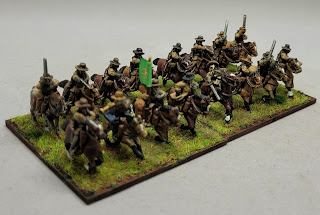
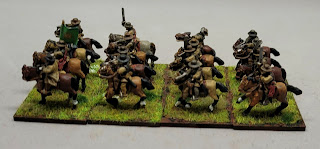






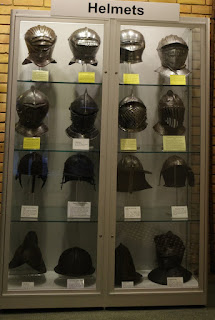
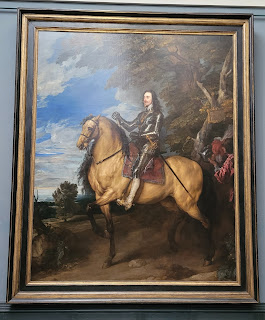
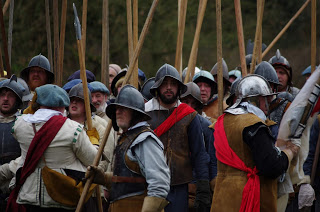

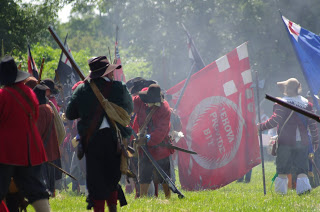
Nice work as ever. I see you went with the vert/green cornet. I've been curious about the reference to Leveson using a sable cornet with an ostrich on it. That seems quite fitting given Dudley is now a zoo!
ReplyDeleteThanks Dex. Certainly missed a trick there didn't I? Might have to change it for the ostrich cornet.
DeleteOf course, you guessed it, ostrich cornet requested from Maverick Models
DeleteSorry!?
DeleteNo need to apologise, it HAD to be done.
DeleteI was curious as to when the ostrich became broadly known in Britain. For example, would the average clubman recognise it? I've not been able to find much specific in that regard. However, recently a bronze sculpted Ostrich from 1600, was recently sold for £1.8million. It had been brought over from Italy by Horace Walpole, much later than our period. But at least someone in Italy knew what they looked like in 1600! There is a globe made from an Ostrich egg, attributed to DaVinci, dating from around 1500. And there's some indication wearing feathers, in caps for example, was a bit of a European fad in the first half of the 17th century. It seems there was a trade in feathers, hunted in sub-Saharn Africa, back into Europe but not much indication the actual birds were traded. In Heraldry the Ostrich is traditionally used as a symbol of watchfulness, often with a horseshoe in its mouth. I wonder if the sword is a variation on the horseshoe.
ReplyDeleteAn interesting thought. I wonder if the Roman trade in exotic animals for the circus might have been the first way that ostriches were heard of in Britain?
DeletePlus the trade in ostrich feathers as hat adornments in 'our' period... whilst the notion of everyone and their dog sporting an ostrich feather in their hat is a Victorian construct, there is enough contemporary evidence for the great and good sporting ostrich feathers. So maybe some levels of society might have been aware and knowledgeable about ostriches, as for the great unwashed... possibly not.
But then there is an increase in literacy, and news sheets recycling images from across Europe. So maybe?
Is there any coat colour references for Leverson’s ROF? Also Leverson’s Horse and Foot were present at Stow on the wold in 1646 a month before the siege of Dudley.
DeleteHi, off the top of my head I don't believe that there are any clothing issue references for Leveson's RoF. A fairly common problem with Royalist troops. As they 'lost' their account books were either destroyed, lost or they are deep in the archives of the great houses. Parliamentarian records all went into the State Papers archives.
DeleteFor an update to date list of known coat colours have a look at my coat colours entries.
Did leverson have a regiment of Foote at Dudley
ReplyDeleteYes, Leveson had a RoF too. No idea on strength. Mostly garrisoned at Dudley, but they did venture out from time to time. 1643
DeleteRaised in 1643 for the castle garrison, they were at the storming of Chillington House and, Lapley House at the tail end of the year.
Some of the regiment also garrisoned at Aston Hall.
In 1644 they fought at Newark and possibly Tipton Green, as well as being besieged at Dudley.
Some of the regiment fought at Naseby.